
Who is a poor Indian? One who earns below Rs 35 a day? Or one whose salary is in four figures? While the debate rages, the Bombay Parsi Punchayet, the organisation that governs the affairs of the Zoroastrian community in Bombay, has said that any Parsi who earns less than Rs 90,000 a month (or Rs 10.8 lakh a year) is poor and therefore eligible for its help in finding a house.
This "poverty line", drawn way above the national per capita income of Rs 68,491 (in 2011-12), was bound to raise eyebrows.
The Punchayet perhaps felt that this was drawing unnecessary attention to the community's prosperity and hence quickly denied it in its monthly magazine, The BPP Review.
...
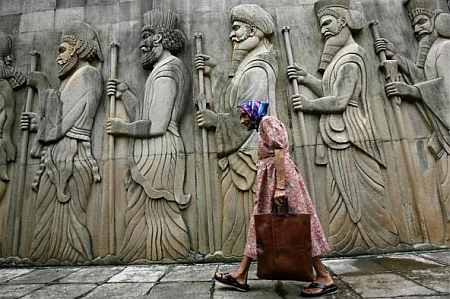
The definition of a poor Parsi, according to Dinshaw Mehta, the Punchayet's chairman, is anybody whose family income is below Rs 10,000 a month. The poverty line of Rs 90,000 a month was drawn only for the allotment of 46 flats owned by the Punchayet in Andheri.
These flats, each of which would cost at least Rs 70 lakh in the market, are being given to Parsis for Rs 20 lakh. A loan of this amount, the Punchayet calculated, would result in monthly installments of at least Rs 25,000.
To pay this money, the family income ought to be Rs 90,000 a month. "One has to view the 'poor' in the context of owning a Rs 20-lakh flat, and not 'poor' in isolation," says Mehta.
...

The Baugs owned by the Punchayet, which stretch from Colaba to Goregaun, have some 5,000 flats. A majority of these were donated by Bai Jerbai Wadia (Bombay Dyeing Chairman Nusli Wadia's great-grandmother).
Some of these are upmarket apartments, well-maintained and clean, while quite a few badly need repairs. I wonder on entering the ramshackle room of Bhanoo Kermani, 82, at Navroz Baug in Lalbaug that how the walls could have so many cracks and still stand.
The floor that is strewn with kerosene to supposedly kill small insects is taking time to dry up because of the wet weather and no fan in the room. Khermani has been living here for the past 30 years after she moved out of her parent's house when they passed away.
She is old but does secretarial work at a place nearby because "the clock refuses to tick". I look at the wall-clock and realise that she isn't speaking figuratively. The long red hand of the clock has indeed stopped counting the seconds.
...

On the other hand, in Khareghat Colony at Peddar road, an Alsatian is frolicking in the veranda of a 3 BHK house. She is gathering soft toys from each of the rooms and piling them in front of the exit door in the hope that it will stop her master, Naushad Engineer, from going out.
Katy, Engineer's mother, is looking at them both, entranced. This is the fourth generation of the Engineer family that is residing in this flat. I ask Katy, 70, if it would be wrong to assess this idyllic picture of her house as a synecdoche of the Khareghat Colony.
"Majority of the people here live more than comfortably," says Katy. "But there are also people here who are genuinely poor. And of course there are people who think they're poor because they think they deserve more charity from the Punchayet."
...
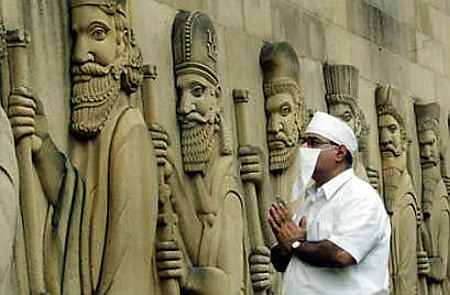
As a general guideline, for most of its Baugs, the Punchayet gives top priority to Parsis wanting to get married. The 46 Andheri flats were no different. Those intending to get married but have not found a life partner yet were given "adequate time to find one on a case-to-case basis".
Anyone who wishes to get married to a person from within the community is looked upon by the Punchayet as doing a great service to the dwindling population of the community.
With 60 per cent of the population aged above 60, 800-900 deaths a year, and only 150-200 births, Mumbai's Parsi population is rapidly declining. There are estimated to be only about 125,000 Parsis globally.
"Either Parsis don't want to have children because of their low income or they have just one child," says Rohington Mehta, 70, a builder and social worker.
...

"That's why the Punchayet has come out with a scheme that pays Rs 5,000 per month for a child until he/she turns 18. If let's say they have three children, the couple is entitled to Rs 15,000 per month.
This grant also ensures that the mother doesn't have to go to work and can stay home to look after her children." Money for the numerous schemes of the Punchayet comes from the interest of Rs 15 crore (Rs 150 million) per annum it earns on its corpus of Rs 150 crore (Rs 1.5 billion).
The corpus has increased substantially over the years (in 1994 it was Rs 14 crore [Rs 140 million) because of the deposits of Rs 50 lakh to a crore given by buyers of upper middle-class homes.
The Punchayet does everything in its capacity to create an atmosphere conducive for romance by organising interactive activities for teenagers in the Baugs.
...
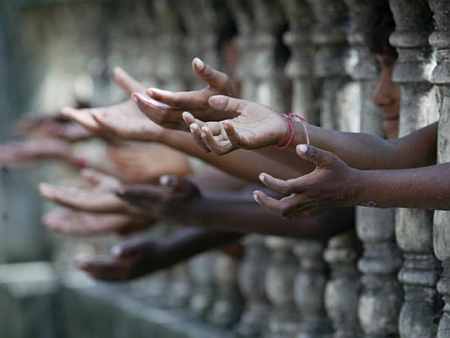
It organises a Holiday Programme for Youth, a month-long programme for Parsi students who have finished their tenth standard exams. This programme, the Punchayet believes, is much more effective "in creating a mindset in our youth to find life partners from within the community", than a thousand lectures.
Mehta says: "You begin to realise [through this programme] that our own culture provides us with the greatest emotional comfort, and therefore the chances of such (intra-faith) marriages succeeding are far higher. None can deny that our population is shrinking. However, this doesn't mean that we make no effort. This programme is a vital part of that effort."
In Mumbai about 40 per cent of Parsis have opted for inter-cast marriages, while 15 per cent of Parsi couples are divorced.
...
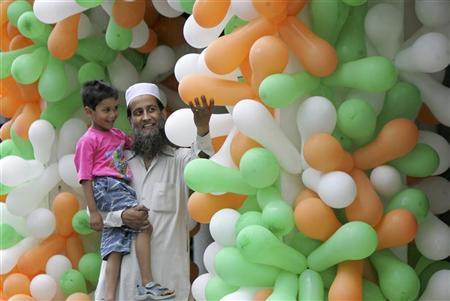
Children of Parsi women who marry outside the community can't become Parsis, though no such rule applies for Parsi men who marry non-Parsi women. It is obvious why the Punchayet is worried, and that's where the Holiday Programme for Youth fits in.
If youngsters, boys as well as girls, don't find 'love' through this programme by the age of 18, they have the option to enrol in ZYNG (Zoroastrian Youth for the Next Generation), the official youth wing of the Punchayet.
What usually attracts the youth to ZYNG is speed dating. People between 18 and 40 can participate in speed dating. In such speed-dating events, 20 girls and boys are made to sit facing each other separated by a table.
...
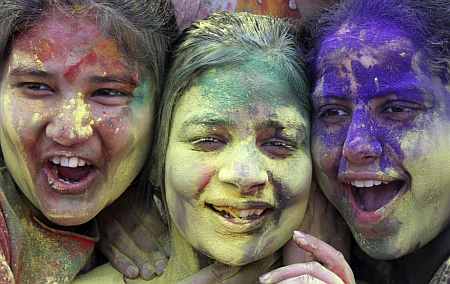
They have just three minutes to break the ice with each other. After the 60-minute session, each is asked to write down the names of the people they want to know more about.
If, for example, a girl names A, B, and C as her preferred choices to go out for a date, she can do so only if A, B, and C have named her in their lists as well.
"While the boys go for looks, girls are more practical. Therefore, we have to counsel the boys about not being too critical before the session," says Dilkhush Reporter, 30, a model and one of the heads of ZYNG. "Then there is the problem that Parsi girls are on an average better settled professionally by 25 than most Parsi boys of that age."
...
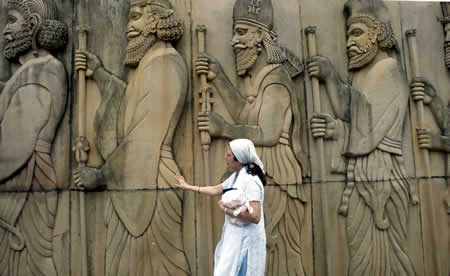
The constant complaint that ZYNG receives from girls is that the boys aren't up to snuff: "If there was one thing you could point a finger to and say that this is the thing due to which our community is struggling then it is this. The boys are not risk-takers.
They are happy with a salary of Rs 25,000 to Rs 30,000. This attitude has turned the community from business class into working class," says Rohington Mehta, who will be rebuilding the 104-year-old Navroz Baug.
He says that he tried to persuade the youth of Navroz Baug to invest in business by offering them capital but they declined. Nauzer Golwalla, a resident of Navroz Baug, says that it is the Parsi boys who are rejecting the Parsi girls because they don't have "realistic expectations".
...

"I will be getting married to a non-Parsi later this year. I've had enough of them [Parsi girls]," says Golwalla, 30, who earns Rs 30,000 per month. "The girl I was dating didn't want to stay with my parents. She wanted a separate house. With my salary it's not easy to get a house in Mumbai without the help of the Punchayat and my application for a new house is pending for the last three years."
If Golwalla indeed gets married to a non-Parsi, he will automatically disqualify himself from owning or staying as a tenant in a Punchayat house because the trust stipulates that the houses are meant only for Parsi Zoroastrians.
But what will work in Golwalla's favour, as opposed to a Parsi girl who marries outside the community, is that his children will be allowed to embrace the Zoroastrian religion and will become a beneficiary of the Punchayat's schemes.
...

"This double standard needs to change. All these conditions (read schemes) are actually there to stop us girls from moving outside the community and maintain the so-called gene purity. My child, if I marry a non-Parsi, can't become a Zoroastrian. What's the great logic behind that," asks a media professional who doesn't wish to be named.
If the Punchayat, she says, is doing everything to increase the population of the community and raise the per capita income then this is obviously a deeply flawed approach.
Mehta, in his defence, says that the trustees of the Punchayat follow the commands of the high priests of the fire temple on matters of religion without questioning. According to the Constitution of India, it is wrong to discriminate against either sex.
...

Rustom Marshal, a senior lawyer, said to a television channel recently: "A great problem is our refusal to change with changing times. The first modern and benevolent step that the Punchayat can take is to treat women who marry non-Parsis the same way as they treat Parsi men who marry outside the community."
So who's really the poor Parsi? Is he the one who earns less than to Rs 90,000 a month? Or is he the one who can't marry a Parsi girl because she makes "impossible demands"?
The 'poor' Parsi could also be the girl who is forced to marry within the community so that she and her husband can be the beneficiary of the Punchayat's largesse. On second thoughts, it might even be the girl who has been excommunicated along with her child for marrying outside the community. This question "Who's really the poor Parsi?" asks more questions than it answers.